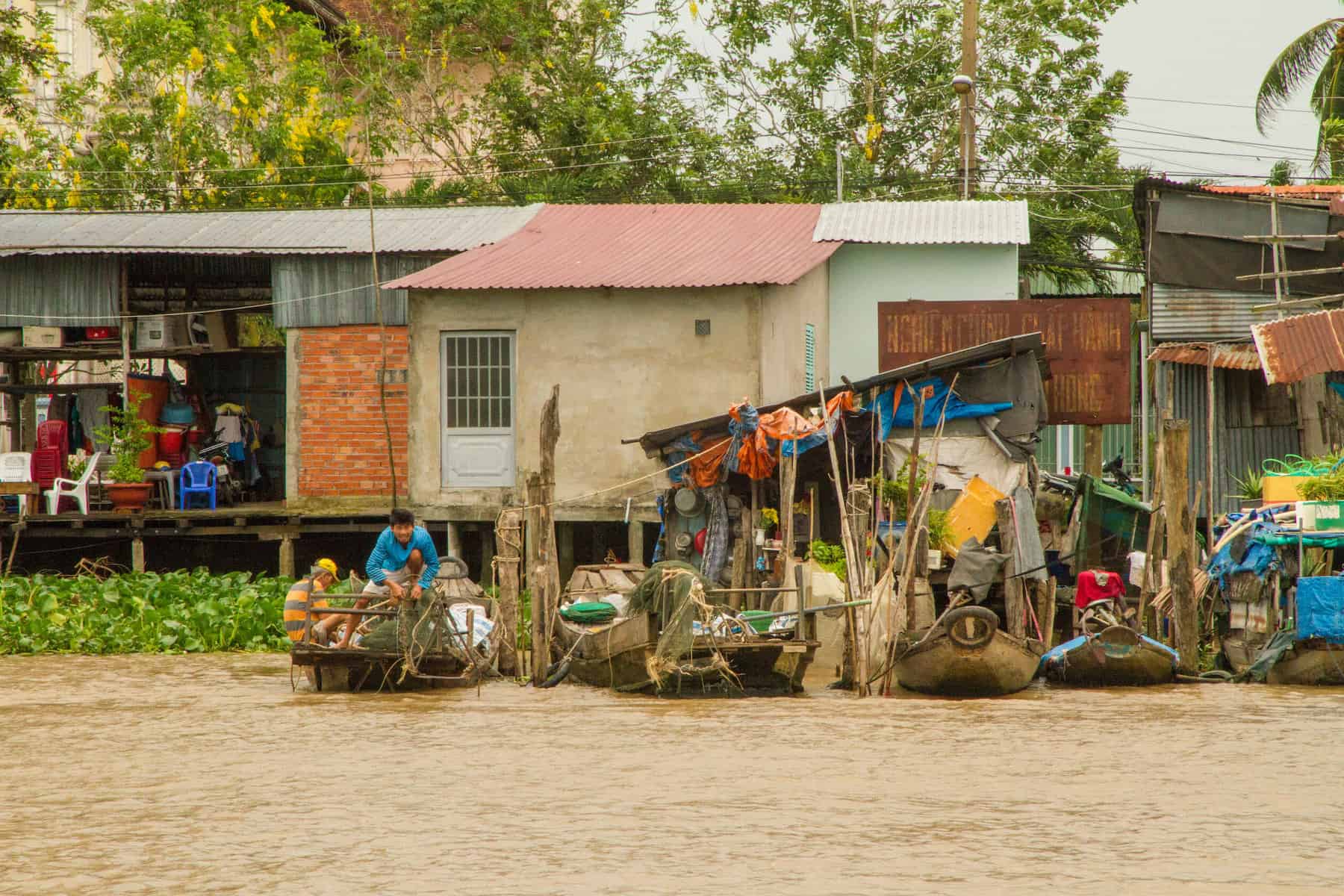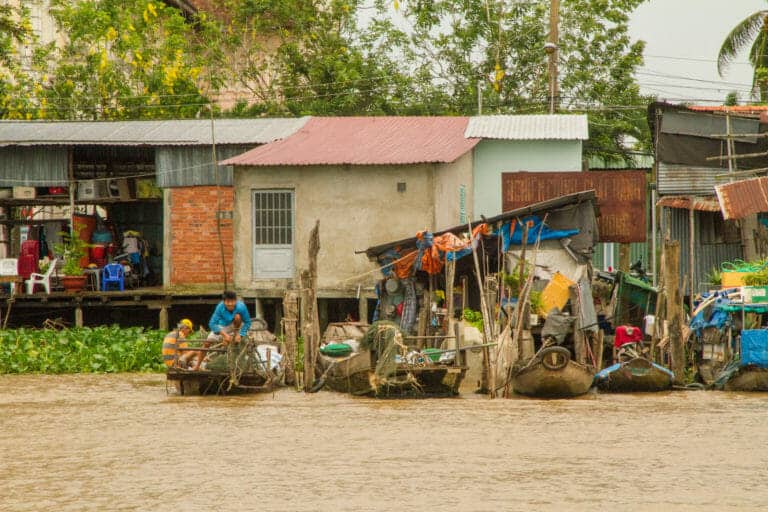Sediment is being removed from the rivers like the Mekong faster than it can be naturally replenished, increasing the risk of riverbank collapse. This photo was taken in Cái Bè, Vietnam. [Credit: Corryn Wetzel | CC BY-SA 4.0]
The global boom in sand mining threatens millions, a new study of the Mekong River suggests
Good sand is surprisingly hard to find, and some of the best — the kind used to make glass, concrete and even iPhones — is usually found only in riverbeds and along coasts. Now researchers are discovering that a global boom in sand mining is damaging some of the world’s great rivers, putting millions of people at risk from flooding and riverbank collapse.
A recent study of Southeast Asia’s Mekong River dramatically illustrates the problem: It concludes that sand mining is lowering the Mekong’s riverbed, destabilizing its banks and altering the way it flows, threatening communities and wildlife along the nearly 3,000-mile river.
“What we found was that the lowering that’s going on is effectively making the riverbanks more unstable,” says Chris Hackney , a sedimentologist at the University of Hull in England and lead author of the study published in January in Nature Sustainability. This means that “it’s more likely that they’ll collapse, and with that, wash infrastructure, or houses, or villages, farmland, people’s livelihoods, away into the river,” he says.
In addition to water, rivers carry sand, clay and even boulders as they flow. As sediment swept downstream is replenished by new deposits from upstream, there’s a balance of erosion — a hallmark of a healthy river. But when sand and other river sediment is dredged-out in huge quantities, the incoming sediment can’t keep up. Removing too much sand can destabilize river banks and cause the river to shift, potentially causing floods.
“We showed that there was about a 44-million-ton deficit every […]
Full article: The covert industry that is destroying the world’s rivers



